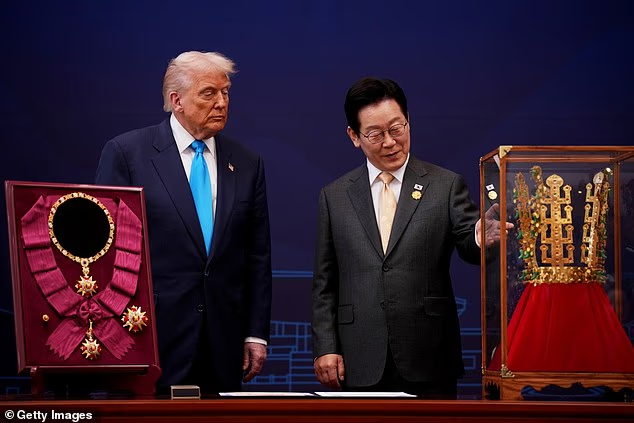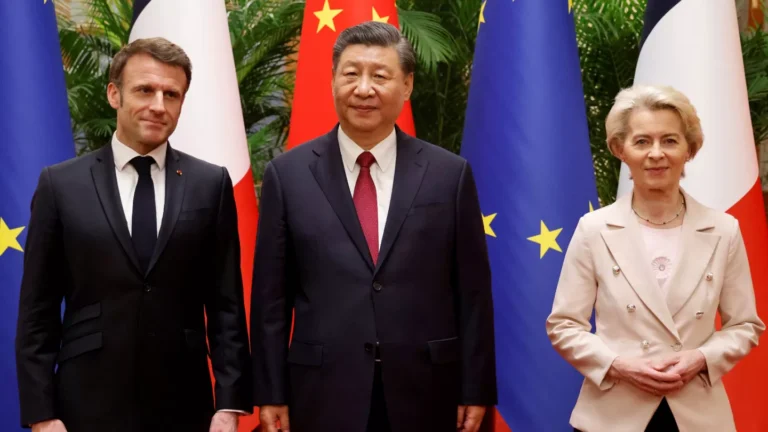
Canadian Prime Minister Mark Carney traveled to the White House on Tuesday. This visit was his second to the Oval Office this year. Consequently, the meeting was crucial. It aimed to ease trade tensions between the two longtime allies. However, relations remain at a low point. The looming review of the U.S.-Mexico-Canada Agreement (USMCA) next year adds urgency. Furthermore, U.S. President Donald Trump’s trade war continues to fracture the amicable alliance. Carney-Trump.
The Oval Office Dynamics: Love and Conflict Carney Meets Trump
The meeting between the two leaders was characterized by mixed messages. On one hand, there was undeniable warmth. President Trump expressed genuine fondness for Prime Minister Carney. He called the Canadian a “world-class leader” and a “tough negotiator.” Carney returned the high praise. He lauded Trump as a “transformative president.” He cited global achievements. These included increased NATO defense spending. They also referenced stability in volatile regions.
On the other hand, a clear tension defined the discussions. Trump framed the U.S.-Canada relationship as one of “mutual love” but also “natural conflict.” He explained that both nations compete for the same business. This competition is made sharper by their close proximity. Carney politely balked at the word “conflict.” He insisted the friction should be described as “competition.” Therefore, the leaders agreed to focus on areas where they are “stronger together.”
The Elephant in the Room: The Trade War
The primary purpose of Carney’s visit was clear. He wanted relief from U.S. tariffs. These tariffs have severely impacted Canadian sectors. Over three-quarters of Canada’s exports go to the U.S. This makes the nation highly vulnerable to U.S. trade action.
Sectoral Tariffs Take a Toll
The Canadian economy feels the sting of Trump’s tariffs. Specifically, the U.S. imposes duties as high as 50% on Canadian steel and aluminum imports. Furthermore, these are justified under the national security pretext of Section 232 of U.S. trade law. Earlier this year, Trump had even boosted some duties to 35%. This escalated the trade dispute significantly.
Carney’s strategy has been careful. He has attempted to build rapport with Trump. This is a contrast to the famously strained relationship Trump had with Carney’s predecessor. Carney has already made concessions. He dropped Canada’s digital services tax. He also fast-tracked defense spending to meet NATO targets.
Despite these efforts, there was no concrete deal announced after the White House meeting. Canadian Trade Minister Dominic LeBlanc called the talks “successful, positive, [and] substantive.” However, he admitted that a deal “is still not in hand.”
A Promise of Swift Action Carney Meets Trump
Nevertheless, the talks ended on a hopeful note. Trump and Carney instructed their trade officials to “continue the conversation.” They also directed them to “quickly land deals.” This action aims to bring “greater certainty” to the steel, aluminum, and energy sectors. This signals an accelerated pace for future negotiations.
The Looming Threat to USMCA
The trade tensions are magnified by the upcoming review of the USMCA. This critical agreement is scheduled for 2026. Trump expressed ambivalence about its future. He said he was open to renegotiating the current pact. Alternatively, he suggested seeking “different deals.”
This uncertainty alarms Canadian officials and businesses. The USMCA is vital to Canada’s economy. Carney has argued that the agreement is an advantage. He notes that over 85% of U.S.-Canada trade remains tariff-free under the pact. Therefore, any threat to dismantle or renegotiate it risks severe economic consequences for Canada.
The Infamous “51st State” Joke Carney Meets Trump
Trump’s rhetoric remains a significant irritant. US President often repeats his long-running joke. He suggests that Canada could avoid tariffs by becoming the 51st U.S. state. He even joked about a “merger of Canada and the United States” during the Oval Office remarks.
This is a sensitive issue for Canadians. Furthermore, it has tangible consequences. Reports indicate a 23% drop in Canadian visits to the U.S. this year. Canadians are canceling trips in protest. This is due to the rising political tensions and the annexation threats.
Carney handled the joke with composure. He responded with polite humor. His measured non-verbal performance stood out. Observers noted that he appeared “cool and in control.” He mirrored Trump’s body language. This suggests a calculated effort to manage the difficult relationship effectively. Carney’s goal is long-term stability for Canada.
Domestic Pressure and the Path Forward
Carney faces intense pressure at home. Opposition leaders are critical. Conservative Leader Pierre Poilievre called the White House visit a “wasted opportunity” without tangible tariff relief. Canadian manufacturers demand action. They have been hurt by the tariffs.
Despite the lack of an immediate deal, Canadian trade officials remain optimistic. They cite the accelerated work schedule. They believe there is momentum for a solution. A working dinner between Carney and Vice President JD Vance was scheduled for the same evening. This shows the high-level commitment to resolving the impasse.
Ultimately, the White House meeting reinforced two truths. First, the U.S. and Canada share immense economic ties. Second, the fundamental difference in trade philosophy remains a hurdle. However, both leaders clearly prefer cooperation. Their personal rapport may yet prove crucial. It could determine whether Canada secures vital tariff relief. It could also determine the future of the continental trade agreement.





